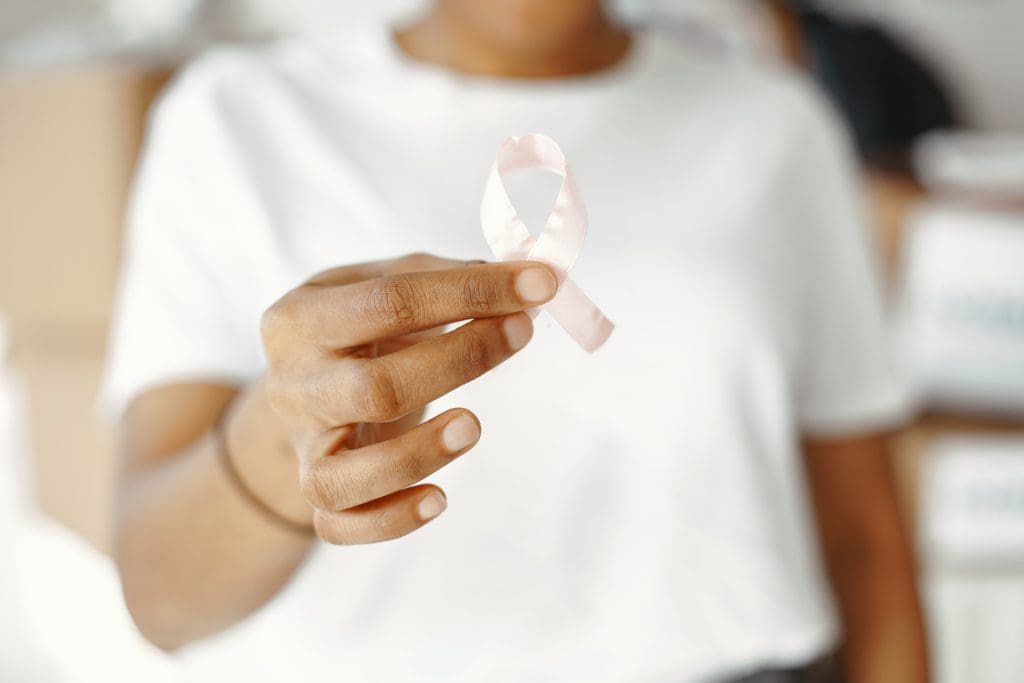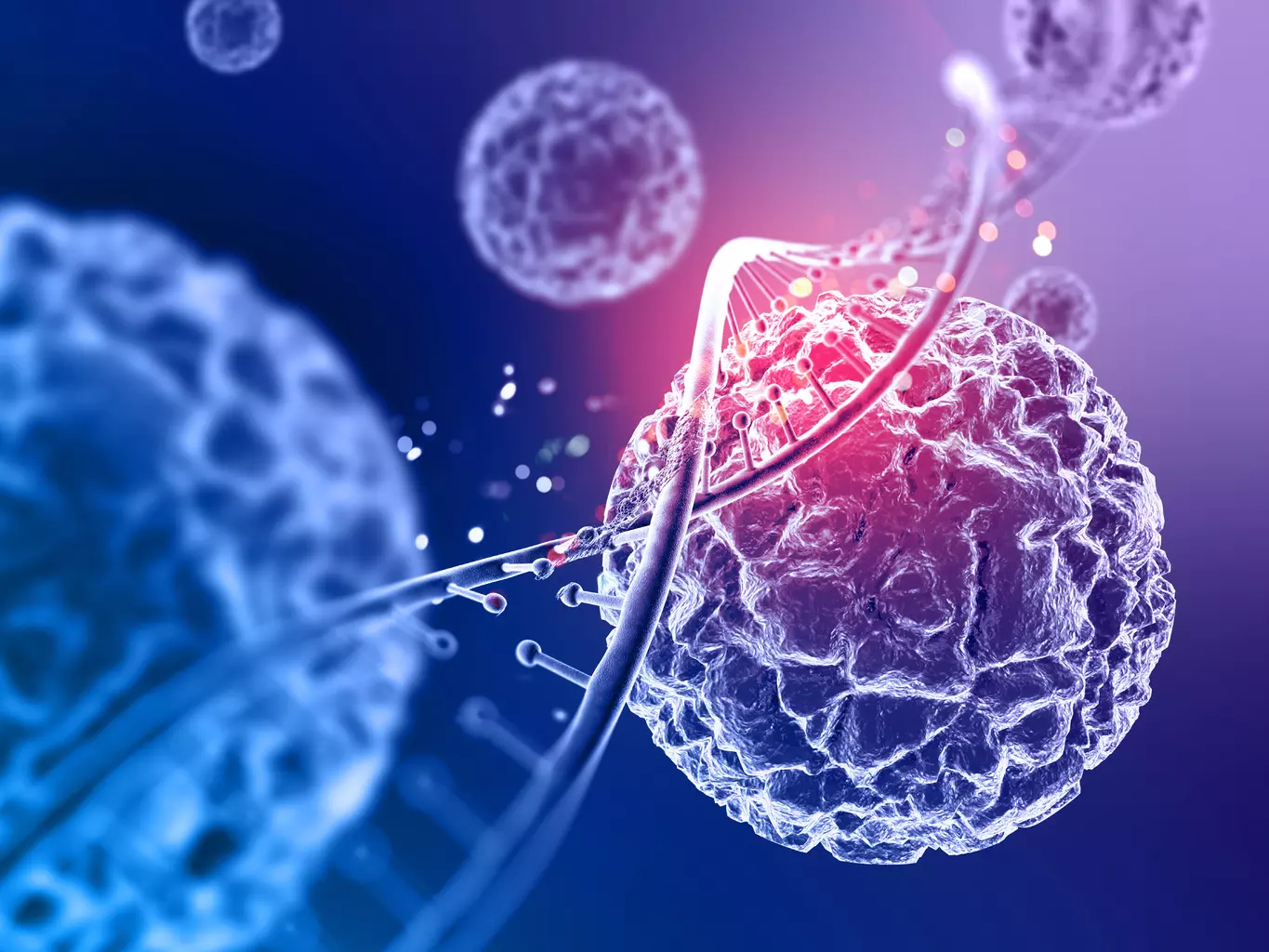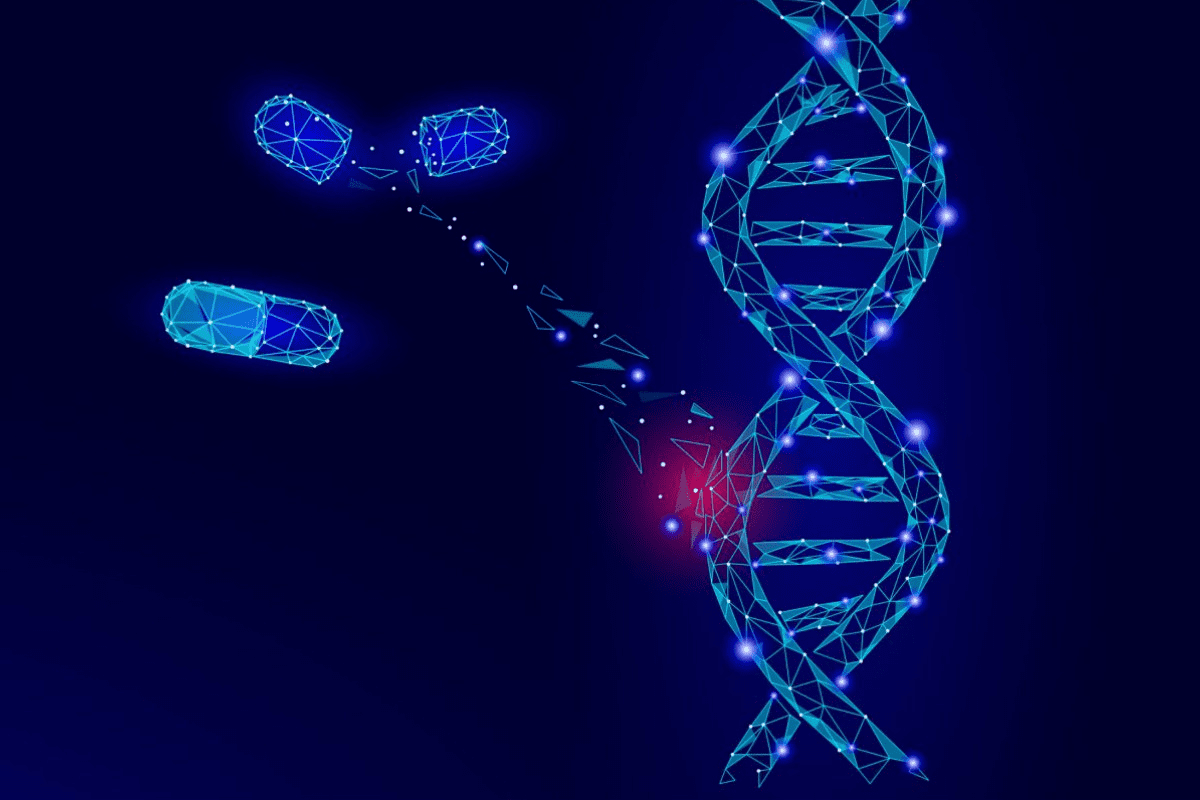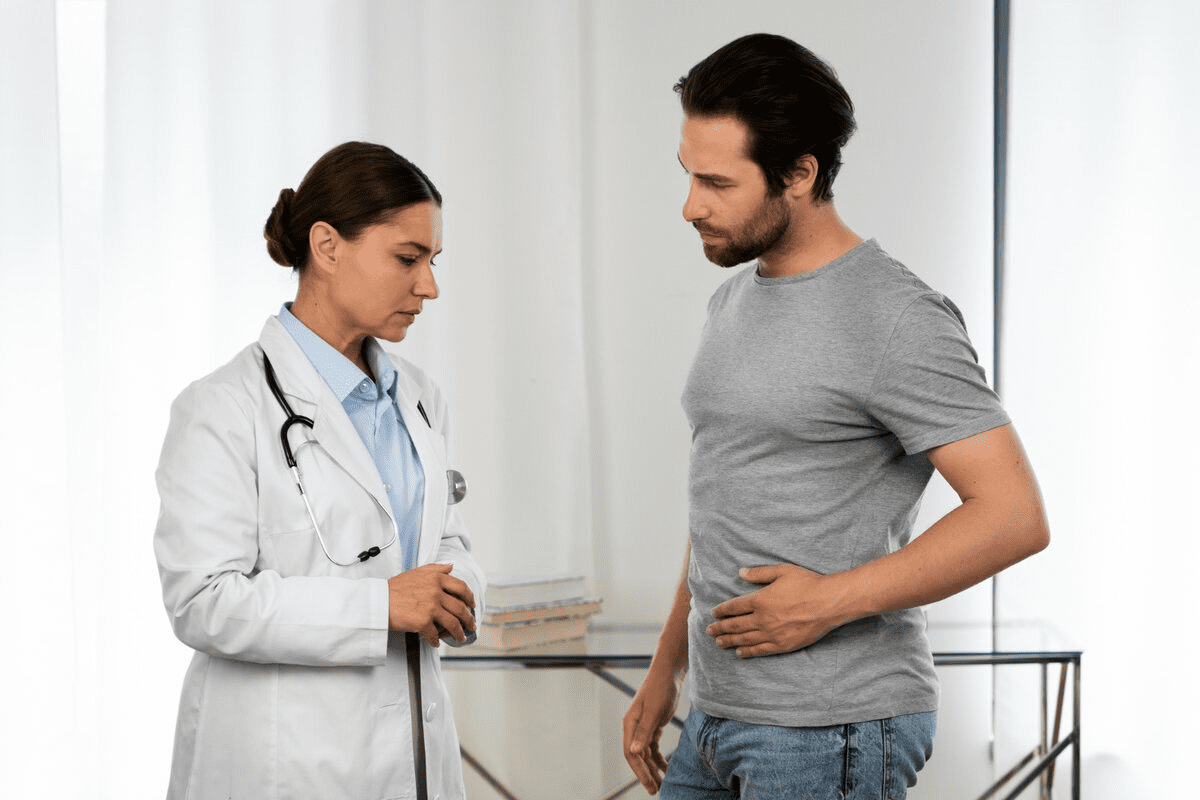Last Updated on November 27, 2025 by Bilal Hasdemir
What are the 7 warning signs of cancer? Nearly 1.8 million people are diagnosed with cancer each year in the United States alone. It’s a leading cause of death worldwide. Early detection is key for effective treatment, yet many overlook the early warning signs.
Knowing the 7 warning signs of cancer can greatly improve survival rates. These signs can show up in different parts of the body. Being aware of them is the first step towards early detection and treatment.
Recognizing these signs can save lives. This article aims to give a detailed overview. It helps readers spot possible symptoms and seek medical help quickly.
Key Takeaways
- Early detection of cancer improves survival rates.
- There are 7 critical warning signs of cancer.
- Awareness of these signs is key for prompt medical attention.
- Cancer can show up in various parts of the body.
- Understanding cancer symptoms is vital for effective treatment.
Understanding Cancer and Its Development

Cancer is a disease where cells grow out of control. It can spread to other parts of the body. This disease, known as malignant neoplasm, is marked by cells that grow without stopping.
What Defines Cancer as a Disease
Cancer is all about cells growing in an abnormal way. This happens when cells don’t follow the usual rules. As a result, tumors form.
Tumors can be either benign or malignant. Malignant tumors are the ones that spread and grow in other tissues.
The term “cancer” covers many diseases. Each one is named based on the type of cell or organ affected. For example, carcinomas start in epithelial cells, and leukemias affect the blood.
How Normal Cells Transform into Cancerous Cells
Normal cells turn into cancer cells through genetic changes and environmental factors. Genetic mutations can come from family history or exposure to harmful substances. These changes mess up how cells work, including how they repair DNA and control growth.
Cells with damaged DNA keep growing, forming tumors. These tumors can spread to other parts of the body. Knowing how this happens helps in finding treatments and ways to prevent cancer.
The Importance of Early Cancer Detection
Early cancer detection can save lives. When cancer is caught early, treatments work better, leading to higher survival rates. This early action can greatly improve treatment results.
Survival Rates: Early vs. Late Detection
The survival rate difference between early and late cancer detection is huge. For many cancers, the five-year survival rate is much higher if caught early. For example, the five-year survival rate for breast cancer is over 90% if detected early. But it drops sharply if found later.
Early detection not only boosts survival rates but also improves life quality. It means less need for harsh treatments. Patients can avoid severe side effects by getting less invasive procedures.
Overcoming Fear and Denial of Symptoms
Fear and denial of symptoms are big hurdles to early cancer detection. Many people delay seeing a doctor because of fear or not wanting to face their symptoms.
It’s key to beat this fear and denial by learning about cancer’s early signs. Knowing these signs can lead to early medical checks. This could mean an early diagnosis and better treatment.
By understanding early detection’s importance and knowing cancer’s early signs, people can protect their health. Regular screenings and check-ups are essential. They help doctors find cancer early, when it’s most treatable.
Warning Sign #1: Unexplained Weight Loss
Unexplained weight loss is a sign that needs quick medical attention. It’s linked to many cancers. Losing weight without trying can mean something is wrong in your body.
What Constitutes Significant Weight Loss
Significant weight loss means losing more than 5% of your body weight in 6 to 12 months. For example, if you weigh 150 pounds, losing more than 7.5 pounds without trying is significant.
This weight loss isn’t from dieting or more exercise. It happens without you trying to lose weight.
Cancer Types Most Associated with Weight Loss
Some cancers are more likely to cause unexplained weight loss. These include:
- Pancreatic Cancer: The pancreas helps with digestion and metabolism. Cancer here can cause weight loss because the body can’t digest food well.
- Stomach Cancer: Also known as gastric cancer, it can cause weight loss. This is because it blocks food passage or affects digestion.
- Lung Cancer: In its later stages, lung cancer can lead to weight loss. Symptoms like loss of appetite and trouble swallowing play a role.
Distinguishing Cancer Weight Loss from Other Causes
Unexplained weight loss can also mean other health issues, like thyroid problems, diabetes, or gastrointestinal diseases. Doctors use tests like blood work, imaging, and physical exams to find the cause.
If you’re losing weight without trying, see your doctor. They can find out why and help you get better.
Warning Sign #2: Persistent Fatigue
Cancer-related fatigue is a deep, lasting tiredness that’s different from regular exhaustion. It’s not just feeling tired after a long day or hard workout. This kind of fatigue doesn’t get better with rest and can really hold you back.
Cancer-Related Fatigue vs. Normal Tiredness
Normal tiredness comes from hard work or mental strain and goes away with rest. But cancer-related fatigue is a deep, ongoing exhaustion that messes with your daily life. It’s not tied to how active you’ve been.
- It’s not based on how much you’ve done.
- It doesn’t get better with sleep or rest.
- It can mess with both your body and mind.
Biological Mechanisms Behind Cancer Fatigue
The reasons for cancer-related fatigue are complex and involve many factors. These include:
- Cytokine production: The body’s immune response to cancer.
- Hormonal changes: Shifts in hormone levels that affect energy.
- Anemia: Fewer red blood cells, leading to less oxygen for tissues.
When Fatigue Warrants Medical Attention
If you’re tired all the time for more than a few weeks, see a doctor. They can figure out if your fatigue is from cancer or something else.
Signs that your fatigue needs a doctor’s check include:
- Big changes in weight.
- Pain or trouble doing everyday things.
- Shortness of breath or other breathing problems.
Knowing the difference between normal tiredness and cancer fatigue is key for catching it early. If you’re worried about your tiredness, get medical help.
Warning Sign #3: Unusual Bleeding or Discharge
It’s important to know that unusual bleeding or discharge could be a sign of cancer. This can show up in many ways and is a key warning sign. Knowing the different types and where they come from helps spot these signs early.
Common Sites and Types of Abnormal Bleeding
Abnormal bleeding can happen in places like the vagina, nipple, or rectum. Vaginal bleeding that’s not during your period, after sex, or after menopause is a red flag. Nipple discharge that’s not normal, like if it’s always there or with a lump, also needs a doctor’s check-up.
Discharge Changes That Indicate Cancer
Changes in discharge can mean cancer. For example, cervical cancer might cause watery, thick, or smelly vaginal discharge. Breast cancer can lead to clear or bloody nipple discharge. Spotting these changes and getting medical help is key.
Immediate Steps When Experiencing Unusual Bleeding
If you notice unusual bleeding or discharge, see a doctor right away. Keep a record of your symptoms, like when they happen and any other signs. Your doctor will do a check-up and might run tests to find out why you’re bleeding.
Knowing what unusual bleeding or discharge means and acting fast can help catch cancer early. This can make a big difference in treatment success.
Warning Sign #4: Persistent Pain
It’s important to know about persistent pain to spot cancer symptoms early. This pain keeps coming back and gets worse over time.
How Cancer Pain Differs from Other Types of Pain
Cancer pain is different because it doesn’t go away and gets worse. It’s not like pain from an injury or inflammation, which usually heals. Cancer pain is hard to treat and keeps coming back.
The pain from cancer comes from growing cancer cells. These cells can hurt nerves, bones, and organs. This makes people feel uncomfortable.
Common Locations of Cancer-Related Pain
Pain locations depend on the cancer type. For example, bone cancer hurts the bone itself. Pancreatic cancer can cause pain in the back or belly.
- Back pain can be linked to spinal tumors.
- Abdominal pain might mean pancreatic or ovarian cancer.
- Headaches and facial pain could point to brain tumors.
Pain as an Early vs. Late Symptom of Cancer
Pain can be an early symptom or a late one, depending on the cancer. For some, pain is the first sign. For others, it shows up later.
Seeing pain as a possible early symptom of cancer can help catch it sooner. It’s key to tell normal pain from cancer-related pain.
Knowing about cancer pain and how it shows up helps people watch their bodies. They should see a doctor if they notice anything unusual.
Warning Sign #5: Skin Changes and Abnormalities
The skin is the body’s largest organ. Changes in it can signal cancer. It’s important to watch your skin for any unusual signs.
The ABCDE Rule for Melanoma Detection
Melanoma is a serious skin cancer. The ABCDE rule helps spot it early. This guide checks for suspicious moles or lesions:
- Asymmetry: One half of the mole doesn’t match the other.
- Border: The edges are irregular, ragged, or blurred.
- Color: The color is not uniform and may include shades of black, brown, or even patches of red, white, or blue.
- Diameter: The mole is larger than 6mm (about the size of a pencil eraser).
- Evolving: The mole is changing in size, shape, or color.
Non-Melanoma Skin Cancer Signs
Non-melanoma skin cancers show different signs. These include:
- New growths or sores that don’t heal.
- Changes in existing moles or lesions.
- Sores that bleed or ooze.
These signs don’t always mean cancer. But, they do need a doctor’s check-up.
Skin Changes Related to Internal Cancers
Skin changes can also hint at internal cancers. For example, some skin conditions are linked to cancers inside the body. These include:
- Acanthosis nigricans, a dark, velvety rash in the body’s folds, which can signal internal malignancy.
- Dermatomyositis, a condition causing skin inflammation and muscle weakness, potentially linked to ovarian or lung cancer.
Watching for skin changes and seeing a doctor for unusual signs is key. It can lead to early detection and save lives.
Warning Sign #6: Changes in Bowel or Bladder Habits
Changes in how you go to the bathroom can mean serious health issues. This includes cancers of the colon, bladder, or prostate. It’s important to notice these changes early to get help.
Colorectal Cancer Warning Signs
There are different ways bowel habits can change. For example:
- Diarrhea or constipation that lasts a long time
- Stools that are narrower than usual or feel like they don’t empty
- Blood in the stool or black, tarry stools
These signs could mean you have colorectal cancer. You should see a doctor.
Bladder and Prostate Cancer Indicators
Changes in how you urinate can also be a sign. For bladder cancer, look out for:
- Blood in the urine
- Needing to urinate a lot or feeling a strong urge
- Pain while you’re urinating
For prostate cancer, you might notice:
- It’s hard to start or stop urinating
- Weak or interrupted flow of urine
- Urinating a lot, often at night
When Digestive or Urinary Changes Require Medical Evaluation
If you notice lasting changes in your bowel or bladder habits, see a doctor. Catching these cancers early can make a big difference in treatment.
Signs that mean you should see a doctor include:
- Diarrhea or constipation that doesn’t go away
- Seeing blood in your stool or urine
- Changes in how often you urinate or pain while doing so
Knowing what’s normal for your body and noticing when things are off can save your life. If you’re experiencing any of these symptoms, talk to a healthcare professional right away.
Warning Sign #7: Persistent Cough or Hoarseness
Cancers of the lung, throat, and larynx can show up as a persistent cough or hoarseness. This is why it’s key to be aware and catch these signs early. These symptoms might seem like minor issues at first, but they’re important signs that need a doctor’s check-up.
Lung Cancer and Respiratory Symptoms
A persistent cough is a common lung cancer symptom. It can be dry or produce mucus. Sometimes, it may even bring up blood or rust-colored mucus.
Lung cancer symptoms can change based on the tumor’s size and location. They also depend on if the cancer has spread. A persistent cough, in people who have smoked or been exposed to harmful substances, is a big warning sign. Other symptoms include shortness of breath, wheezing, and chest pain.
Throat and Laryngeal Cancer Signs
Hoarseness is a key symptom of throat and laryngeal cancers. It can happen when a tumor affects the vocal cords or the nerves that control them. Other signs include trouble swallowing, feeling like something is stuck in your throat, and pain when swallowing.
It’s vital to catch these cancers early for the best treatment. So, any lasting change in your voice or swallowing troubles should be checked by a doctor.
Differentiating Cancer Coughs from Common Respiratory Infections
Telling a cancer cough from a common cold cough can be tough. But, some signs point to a serious issue. For example, a cough that lasts more than two weeks or comes with other symptoms like weight loss, fatigue, or coughing up blood, needs a closer look.
If you’re having a persistent or odd cough, see your doctor. Early diagnosis and treatment can greatly improve your chances of beating lung, throat, or laryngeal cancer.
Gender-Specific Cancer Warning Signs
Cancer can happen to anyone, but some signs are more common in men or women. Knowing these differences is key to catching cancer early. This can lead to better treatment and survival rates.
Women’s Cancer Warning Signs
Women should watch out for signs of breast, cervical, and ovarian cancers. Breast cancer often shows up as a lump in the breast. Women should get mammograms every year starting at 45.
“Early detection is key to surviving breast cancer,” says cancer research. This is why catching it early is so important.
- Unusual vaginal bleeding or discharge could be a sign of cervical or endometrial cancer.
- Pelvic pain or discomfort may indicate ovarian cancer.
- Changes in breast appearance or sensation, such as nipple inversion or dimpling, could signal breast cancer.
Men’s Cancer Warning Signs
Men face a higher risk of prostate, testicular, and colorectal cancer. Prostate cancer often shows up with urinary symptoms or sexual problems. The
“The importance of discussing prostate health with a healthcare provider cannot be overstated, for men over 50 or those with a family history.”
- Difficulty urinating or painful urination may be a sign of prostate or bladder cancer.
- A lump or swelling in the testicle could indicate testicular cancer.
- Changes in bowel habits or the presence of blood in the stool may signal colorectal cancer.
Knowing these signs can help catch cancer early. This leads to better treatment and survival chances. It’s vital for both men and women to watch their health closely. If they notice anything unusual, they should see a doctor right away.
Risk Factors That Increase Cancer Susceptibility
Cancer develops from a mix of genetic predisposition, lifestyle, and environmental factors. Knowing these risks helps us prevent and detect cancer early.
Genetic and Family History Considerations
Genetics greatly affect cancer risk. A family history of cancer might mean a genetic link. For example, BRCA1 and BRCA2 mutations raise breast and ovarian cancer risks. Genetic tests can spot high-risk individuals, allowing them to act early.
Key genetic considerations include:
- Family history of cancer
- Specific genetic mutations (e.g., BRCA1, BRCA2)
- Genetic syndromes (e.g., Lynch syndrome)
Lifestyle and Environmental Risk Factors
Lifestyle and environment also impact cancer risk. Some habits and exposures raise cancer risk, while others lower it.
Lifestyle risk factors include:
- Tobacco use
- Diet and nutrition
- Physical activity levels
- Alcohol consumption
Environmental risk factors include:
- Exposure to carcinogens (e.g., asbestos, radon)
- Ultraviolet (UV) radiation from the sun or tanning beds
- Infections (e.g., HPV, Hepatitis B)
Understanding these risks lets us make choices to lower cancer risk. We can live healthier, avoid harmful exposures, and get regular medical checks.
Cancer Prevention Strategies
Cancer prevention is about making lifestyle changes and using medical care. By doing these things, people can lower their cancer risk a lot.
Lifestyle Modifications to Reduce Cancer Risk
Healthy lifestyle choices are key to preventing cancer. This means eating right, staying active, not smoking, and drinking less alcohol.
- Dietary Changes: Eating more fruits, veggies, and whole grains can help. Some foods protect against cancer.
- Physical Activity: Exercise keeps you healthy and lowers cancer risk. It’s good for your body.
- Avoiding Tobacco: Smoking causes a lot of cancer deaths. Staying away from tobacco is very important.
- Limiting Alcohol: Drinking too much alcohol raises cancer risk. It’s best to drink in moderation.
Preventive Medical Care and Screenings
Preventive care, like screenings and vaccines, is also key. Screenings can find cancer early, which helps with treatment.
| Screening Type | Recommended Age to Start | Frequency |
| Mammogram | 40-45 | Annually |
| Colon Cancer Screening | 50 | Every 10 years (colonoscopy) |
| Pap Smear | 21 | Every 3 years |
It’s important to talk to a doctor about when to get screened. They’ll consider your personal risk factors.
When and How to Discuss Cancer Symptoms with Your Doctor
Talking about cancer symptoms with your doctor is very important. It can really help with your diagnosis and treatment. When you notice symptoms, it’s key to be ready to talk about them clearly.
Preparing for Your Medical Appointment
Before you go, it’s a good idea to keep a symptom journal. This journal should track when symptoms happen, how bad they are, and what makes them better or worse. This information can really help your doctor.
- List your symptoms and when they started.
- Note any changes in your body or health.
- Mention any family history of cancer.
Effective Communication About Symptoms
When you’re at the appointment, clear and concise communication is essential. Tell your doctor about your symptoms in detail, using your journal. Don’t be shy to ask questions or ask for clarification on any medical terms.
- Be honest about your symptoms and health concerns.
- Use simple, straightforward language to describe your symptoms.
- Ask for a summary of your discussion to ensure understanding.
Being prepared and talking clearly can lead to a better conversation with your doctor. This can result in a more accurate diagnosis and the right treatment plan for you.
Modern Approaches to Cancer Treatment
The way we treat cancer has changed a lot. It shows how much medical science has grown.
Today, we have many ways to fight cancer. From old methods to new ones, knowing them helps patients choose wisely.
Traditional Treatment Modalities
Older cancer treatments are surgery, chemotherapy, and radiation. They’ve been key in fighting cancer for years.
- Surgery tries to cut out tumors and bad tissues.
- Chemotherapy uses drugs to kill cancer cells.
- Radiation therapy uses high-energy rays to hit cancer cells.
These treatments are used alone or together, based on the cancer type and stage.
Emerging Therapies and Clinical Trials
New therapies and clinical trials bring hope. They include targeted therapy, immunotherapy, and precision medicine.
- Targeted therapy goes after specific cancer cell traits.
- Immunotherapy uses the body’s immune system to fight cancer.
- Precision medicine treats based on the patient’s and cancer’s genes.
Clinical trials test new treatments. They can offer new therapies not yet common.
As cancer treatment keeps getting better, talking to doctors is key. It helps find the best treatment for each person.
Conclusion: Empowerment Through Knowledge
Knowing the warning signs of cancer is key. It helps in early detection and managing the disease. By learning about cancer, people can spot problems early. This makes it easier to get medical help on time.
Being informed empowers us. Spotting cancer signs like weight loss or unusual bleeding helps us act fast. This quick action can lead to better treatment and health.
Preventing and detecting cancer early are vital. Making healthy choices and getting screenings can lower risk. Talking to a doctor about any symptoms is also important. It’s a big step in fighting cancer.
Cancer knowledge gives us power. It lets us take control of our health and make smart choices. Awareness, prevention, and quick action can lessen cancer’s impact. This improves life for those dealing with it.
FAQ
What are the 7 warning signs of cancer?
The 7 warning signs of cancer include unexplained weight loss and persistent fatigue. Also, unusual bleeding or discharge and persistent pain are signs. Skin changes and abnormalities, changes in bowel or bladder habits, and persistent cough or hoarseness are also warning signs.
What is cancer and how does it develop?
Cancer is a disease where cells grow out of control. This happens when normal cell growth stops, leading to uncontrolled growth. It can be caused by genetic mutations, environmental factors, or both.
Why is early detection of cancer important?
Early detection of cancer is key to better survival rates and treatment success. When caught early, cancer is often easier to treat. This increases the chances of successful treatment.
What are the common symptoms of cancer that I should be aware of?
Common symptoms of cancer include unexplained weight loss and persistent fatigue. Unusual bleeding or discharge and persistent pain are also signs. Skin changes, changes in bowel or bladder habits, and persistent cough or hoarseness are warning signs too.
How can I reduce my risk of developing cancer?
To reduce cancer risk, make lifestyle changes and follow medical advice. Eat healthy, exercise regularly, and avoid tobacco. Limit alcohol and get regular screenings.
What are the risk factors that increase cancer susceptibility?
Genetic and environmental factors increase cancer risk. Genetic factors include family history and inherited mutations. Environmental factors include exposure to carcinogens, tobacco use, and certain infections.
How do I discuss cancer symptoms with my doctor?
To discuss symptoms with your doctor, document them before your appointment. Note when they started and any changes. Communicate clearly and ask questions about your diagnosis and treatment options.
What are the modern approaches to cancer treatment?
Modern cancer treatment includes surgery, chemotherapy, and radiation therapy. It also includes emerging therapies and clinical trials, like immunotherapy and targeted therapy.
What is the ABCDE rule for melanoma detection?
The ABCDE rule helps detect melanoma. A stands for asymmetry, B for border irregularity, C for color variation, D for diameter, and E for evolving. If a mole shows these signs, it may be melanoma.
How can I differentiate cancer coughs from common respiratory infections?
To tell cancer coughs from common infections, look at the cough’s duration and characteristics. A persistent cough lasting weeks or with other symptoms like weight loss or difficulty breathing may indicate cancer.






